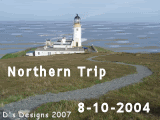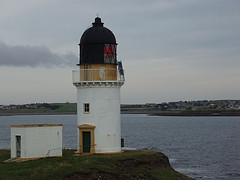This space probe was launched at the beginning of this year, and passed the planet Jupiter in February and March. Its path was designed to pass close by the planet in order to use its gravitational field for the purposes of acceleration. At the moment, New Horizons is travelling at a trifling 52,000 mph. Its main objective is the planet Pluto and its moon Charon. Earlier this year, it was decided that Pluto was not a planet and was in fact in a so-called binary system with Charon. In July 2015, NH will pass Pluto at a distance of only 6,200 miles and Charon at 16,800 miles. That's very close indeed. Having passed these two, New Horizons will travel on to the outer reaches of the solar system, to a ring of objects known as the Kuyper Belt. The distances involved are vast. Without the slingshot round Jupiter, the probe would have taken another 4 years to reach Pluto. Even now, it will take another 8 years.
The distance to Pluto, a bit much for an afternoon stroll really, is 6 billion km or 4 billion miles, give or take one or two miles. Mind you, the nearest star is rather further away. Alpha Centauri, from where it takes light 4.2 years to reach earth, is 25 million million miles. This distance is referred to as 4.2 lightyears. New Horizons will arrive there, if that's where its path will take it, in the year 6,000. What you see is what the star was like in 2003 - you cannot see Alpha Centauri from high northerly latitudes by the way. However, 4.2 lightyears is peanuts on a cosmic scale. When you look into the autumn night sky, you'll see four stars marking out an empty square. Off to the right, a faint blurry object can be made out. This is the Andromeda Nebula, prosaically referred to as M31. It is a galaxy outside our own, at a distance of 31 million lightyears. If New Horizons were to survive, it would reach there in 3.1 billion years. And even 31 million lightyears isn't much. The most distant objects observed in the universe are thought to be 12.5 billion lightyears away. You see light that was emitted before the sun even existed, 7.5 billion years before that was formed. New Horizons will never reach there, as the universe will probably have ceased to exist by that time, 12,500 billion years from now.
Right, time for a cup of tea. The sun is out, it's 10 October 2007, the clock says it's 4.19pm and the tide is coming in again.
Wednesday, 10 October 2007
Subscribe to:
Post Comments (Atom)












Very interesting stuff....thanks for sharing....June:)
ReplyDeleteI find it impossible to imagine these times and distances. Sling shots using gravitational pulls and throws etc I can understand. I see space and all the objects in it as schisms of moments in time which one day will be passed through, or stepped next door into, without the archaic travel used today. Just an idiotic idea I like to muse about and hang on to for lack of another reason for the vastness of space. Lol!
ReplyDeleteJeanie
These distances are beyond human comprehension. I think the distance between my house and Los Angeles (1,200 miles) is mind boggling. Rained all night last night...more on the way. Linda in Washington state
ReplyDeleteGuido,
ReplyDeleteIntresting information....thanks. Have a safe trip to the mainland.
David
I was gutted when I found out Pluto was not a planet. Hey ho, though, life goes on.
ReplyDeleteGaz
I've always loved astronomy, we studied it in grammar school and I was always top of the class! It's so vast out there and I'm so glad I live in these times where we're able to see wonderful photos of different nebulae taken with space telescopes. It really fires your imagination doesn't it?! When in Hawaii I went to the top of Mauna Kea where the huge telescopes are, one of the highlights of my life so far! Hope you're having a good trip to the mainland. Jeannette xx http://journals.aol.co.uk/jlocorriere05/Welcometomytravels
ReplyDelete